My original plan in bringing my fiddle was to play Scottish music in Scotland. I had chosen tunes that reflected our itinerary and practiced them for months. As far as we could figure, however, the seasick patch affected my coordination to the extent that I was unable to play worth squat! I was ready to throw music and fiddle into the briny deep and jump in after them! It wasn't until the end of the trip that everything worked out and I could play again. Bobbie Burns said it best: "The best laid schemes o' Mice an' Men, Gang aft agley."
We started our visit to Scotland with whisky rather than the northern end of the putative Giant's Causeway at Staffa. Seems appropriate. Almost all of our time in Scotland was visiting islands in the Inner & Outer Hebrides, the Orkneys and Shetland. Inhabitants of these islands do not necessarily look on themselves as Scottish and often use the term "Scotland" to refer to the mainland rather than their home island.
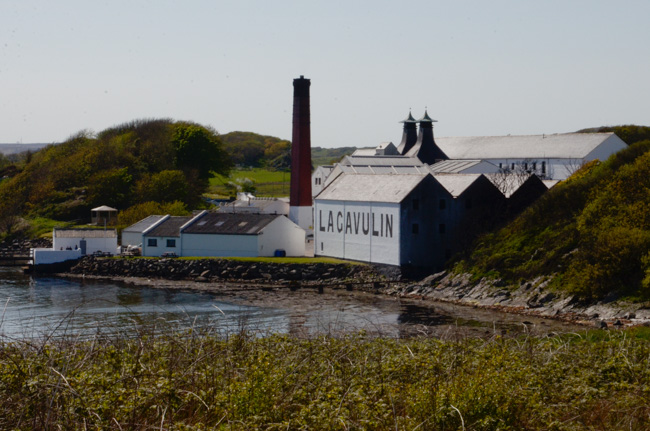
The island of Islay (EYE-la) is home to no fewer than eight distilleries. Our focus would be on the south of the island where Lagavulin, Laphroaig & Ardbeg are neighbors. A strong peaty flavor distinguishes all three of these. Our group would be visiting Lagavulin, but several of us opted for birding excursions instead. I joined the "birding lite" faction, which had never been birding before. It was interesting. In order to do it well, one must know the likely birds, their preferred habitat, and their songs. Once you have found the habitat, you can listen for the birds that might be found there. If they speak, then you may be able to spot one.
Our little group ended up taking the tour anyway. I still don't care for Scotch.
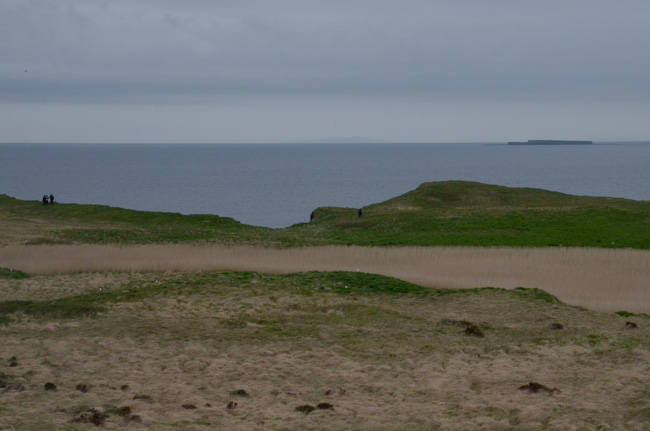
There is more to Staffa than Fingal's Cave or the Puffin nests.
Prior to landing we enjoyed Zodiac cruises around the island. I decided to forgo the hike to Fingal's Cave, having done it before. At the puffin burrows I despaired (again) of getting any darling pictures. I then explored the rest of the island -- beautiful in its austerity.
I may not have gotten intimate with puffins, but I got too personal with a Skua pair who felt I had encroached on their nesting area. I do not recommend being tag-teamed by two rather large and aggressive birds! Got some great pictures for the detailed page.
Fingal's Cave march is one of the tunes that I play. It can also be played as a strathspey.
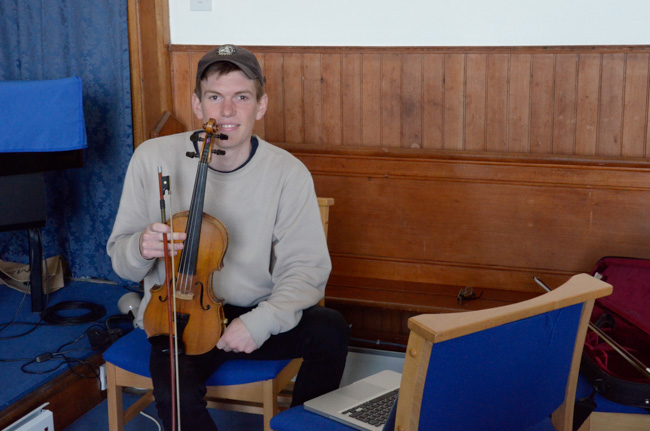
Someday I want to participate in an Iona retreat. In the meantime I must be content with short visits. Several of the church leaders in my home church have been to the retreats, and I was happy to be able to say prayers for my pastor and his family while here since he had suffered a heart attack shortly after we left. (By the time we got home, he was doing fine.)
On this visit I wandered into the parish church, where I found this young man making some recordings of his fiddle tunes. We talked briefly about my own love of Scottish music. Someday I hope to be good enough to travel through the area and join in jams.
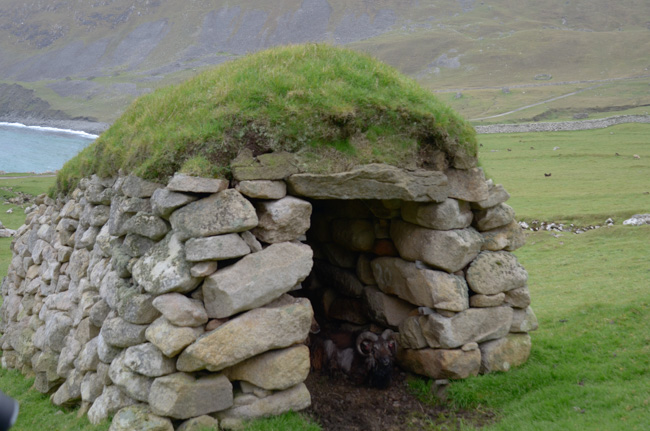
St Kilda lies in the North Atlantic to the east of the Outer Hebrides. The islanders petitioned to abandon the island as the local economy became unsustainable. They were resettled elsewhere in Scotland in 1930 and none have returned -- except to be buried in the island cemetery.
Feral sheep roam the island and it is home to a military outpost. Conservation specialists reside there in season.
Enigmatic stone structures dot the hillsides. They were used to provide shelter for the sheep and perhaps also for shepherds caught out when nasty weather closed in. Although we had excellent weather for most of our trip, here it was foggy & intermittently rainy with a fierce wind. The first "long walk" was cancelled due to weather and "Plan B" was abandoned as well due to the wind.
St Kilda Wedding is a Scottish reel that I've now added to my practice list.
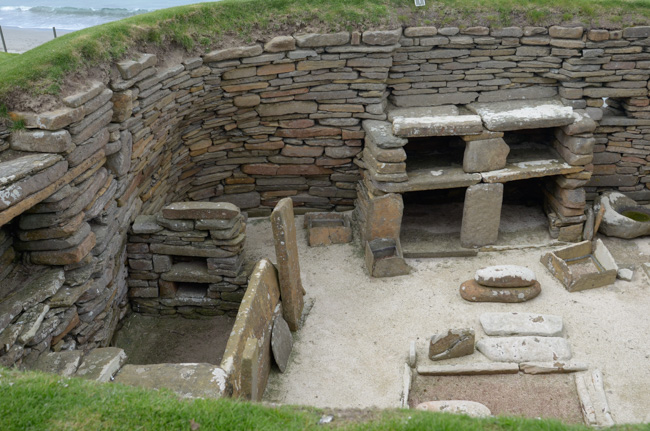
The 5000 year old village of Skara Brae in the Orkney Archipelago was buried for millennia until it was uncovered by a storm in 1850. The well-preserved ruins provide an intriguing window into Stone Age life complete with basic furnishings such as hearths, bed enclosures, and storage cupboards.
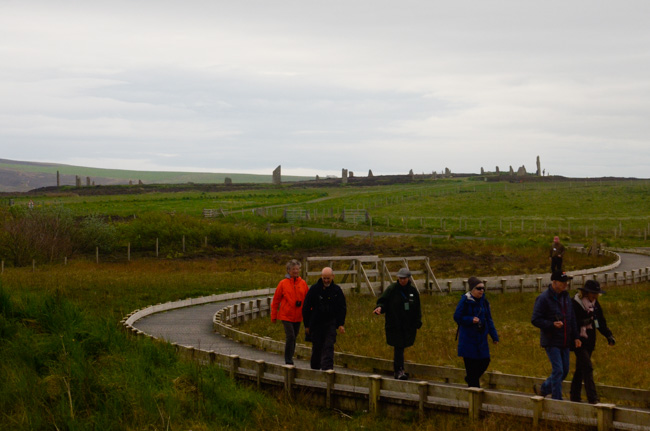
The Ring of Brodgar, seen in the distance, is part of an extensive ritual landscape. We explored the ring in some detail but only drove by other nearby stone features and mounds. This one joins the "next time" list.
Unlike Stonehenge, it is still possible to roam amidst the stones and touch them. My Scottish fiddle teacher wrote a haunting lament after a visit to the site. Now that I've returned, I've added it to my practice list.
That evening we enjoyed a concert by some fabulous local musicians called saltfishforty. We bought one of their albums and are planning to order the others online.
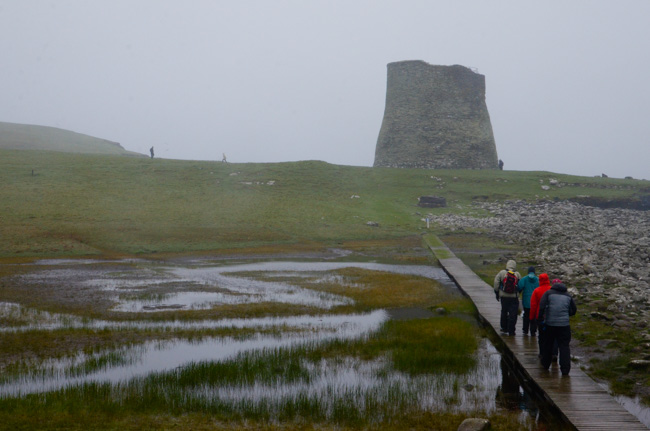
Normal weather, i.e., wet and foggy, caught up with us again at the Shetland site of Mousa Broch. Archaeologists believe that the builders used the structure as a residence rather than a fortress, although later use by the Vikings was for protection.
The area is noted for its seabirds and as usual on our landings the birders took off on their own. The weather derailed plans for a long hiking group.
The interior of the broch featured a stairway within the walls that led up to the top. Weather limited the expansive view, but the stairway itself, which is original, was fascinating.
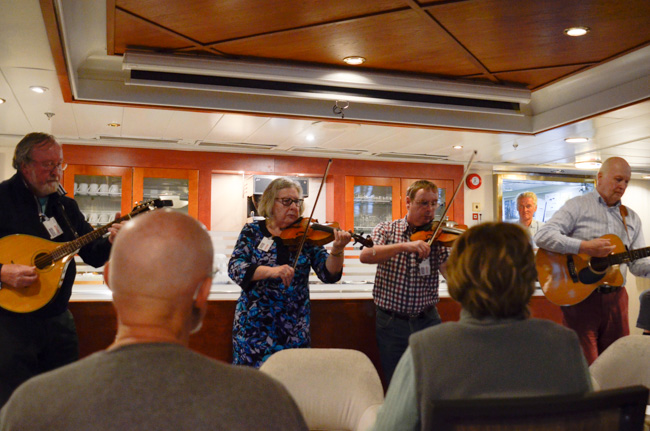
Although I had not taken my camera to the saltfishforty session, I did bring it along for this presentation by some Shetland musicians who played during our evening docked in Lerwick. This session had not been previously arranged. One of the musicians saw the ship in port and approached a staff member about a concert. They were really good too. One of the tunes they performed, Willafjord, is also in my playlist. The YouTube version at the link is not on fiddle, but it captures the tune.
Since the trip I've added another Shetland tune from this session to my practice list.
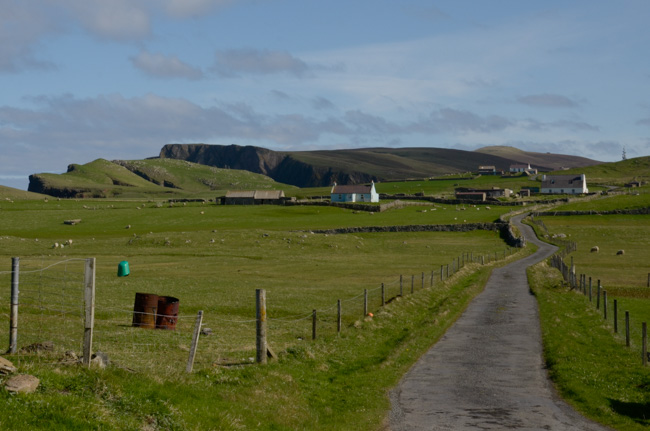
We were lucky to get a landing on Fair Isle. The heavy swell at the standard anchorage would have prevented disembarkation, but our captain found a sheltered bay that enabled us to get off the ship. An added attraction was a longer excursion through stunning rock formations.
The ship scheduled for the previous day had been unable to disembark passengers. The islanders, who set up snacks and sell local products to tourists, had seen our ship leave its original site and figured that we were leaving too. They packed up and went home until the inhabitants of the house nearest the landing zone saw our Zodiacs and activated the telephone tree!
I passed on all of the planned hikes to wander country lanes on my own. I did make it to the community center to buy a nifty Fair Isle "kep."
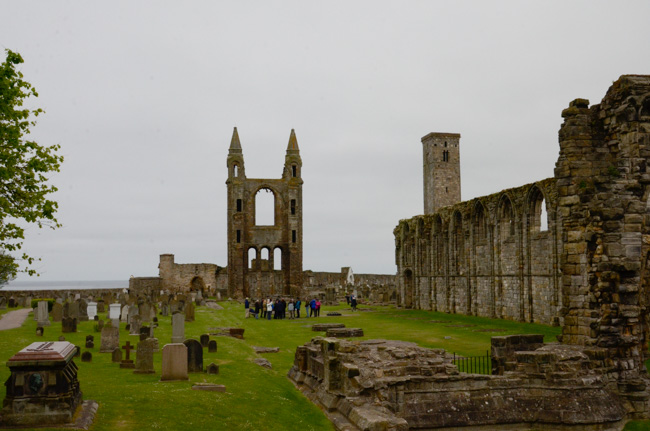
We bade farewell to our ship and most of our expedition staff at Aberdeen and toured the countryside by bus on our way to Edinburgh.
St. Andrews is known world-wide as the home of golf. Not being golfers, we focused on the rest of the city. St. Andrews Cathedral, dating from the 12th century, was once the largest in Scotland, but it was burned in the 16th century (giving substance to the term "firebrand" as applied to John Knox, who led the mob that torched it). The remains were looted for building materials. Time has done the rest.
The square tower was part of an even older structure that predated the cathedral.
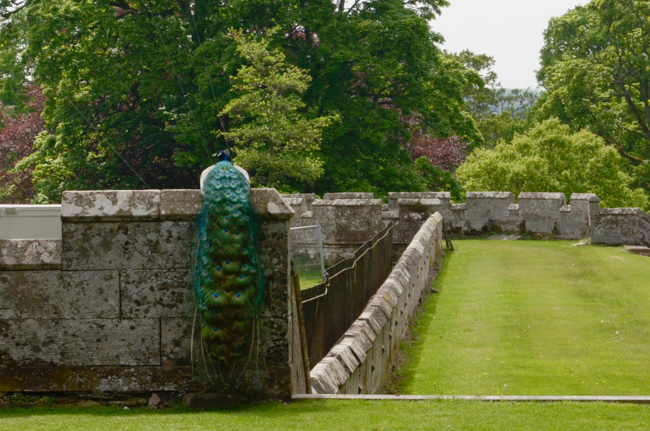
Scone Palace (pronounced /skun/), originally part of a 12th century abbey, managed to survive John Knox's fanaticism, and became the home of a secular lordship in the 17th century. It was the original home of the Stone of Scone, used in the coronation of Scottish and then English kings & queens.
There is much more in the detailed pages, but I was charmed by the collection of peafowl roaming the gardens -- including a white peacock. The birders didn't seem captivated by domestic fowl.
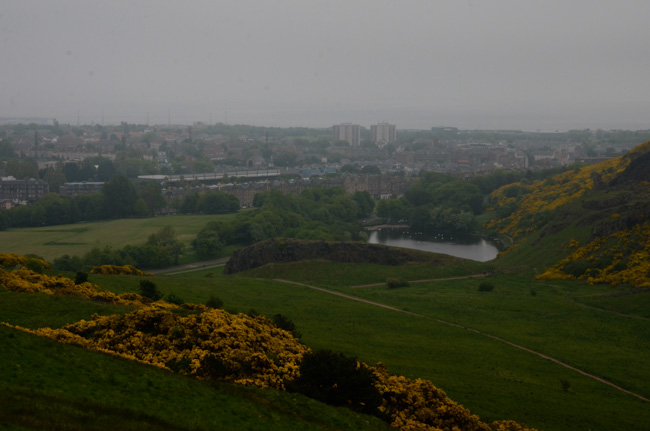
At Edinburgh we also said goodbye to the majority of our fellow travelers. A much smaller contingent continued on to the Faroe Islands, but we had most of a day to tour the area around Edinburgh.
I was thrilled to hear that we would not be spending our time in the tourist mills of the Royal Mile. Instead we had a chance to hike around Holyrood Park, with particular emphasis on Hutton's Section. It felt great to stretch my legs after a day on a bus!
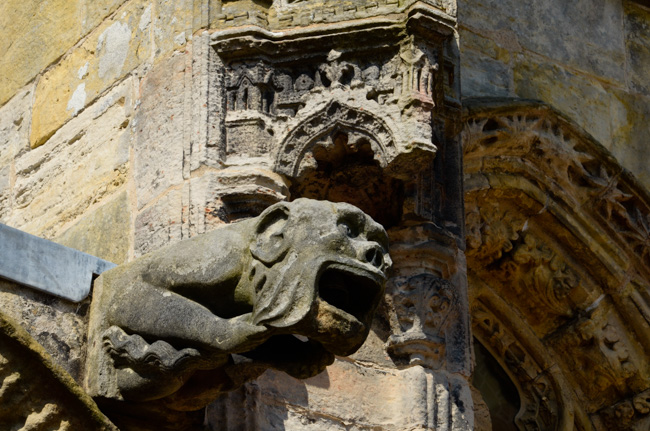
A rather more touristic destination was Rosslyn Chapel. I was excited, not by the chapel itself, but by its proximity to Rosslyn Castle, which has inspired a mournful Scottish air that is migrating into my playlist (the key is a challenging one).
When I asked our local tour guide if she could lead me to the ruined castle, she was puzzled, but convinced when I told her about the tune. Unfortunately the high bridge where the best view is available was off-limits on that day, but we were able to walk down into the glen for a partial view of castle. Alas the Right to Roam doesn't include trespassing beyond closed gates. I didn't have my fiddle, so I hummed the tune for her.
From Roslyn we headed to the Edinburgh Airport for our flight to the Faroe Islands.
Click your "back" button to return to the previous page or click for our picture album.